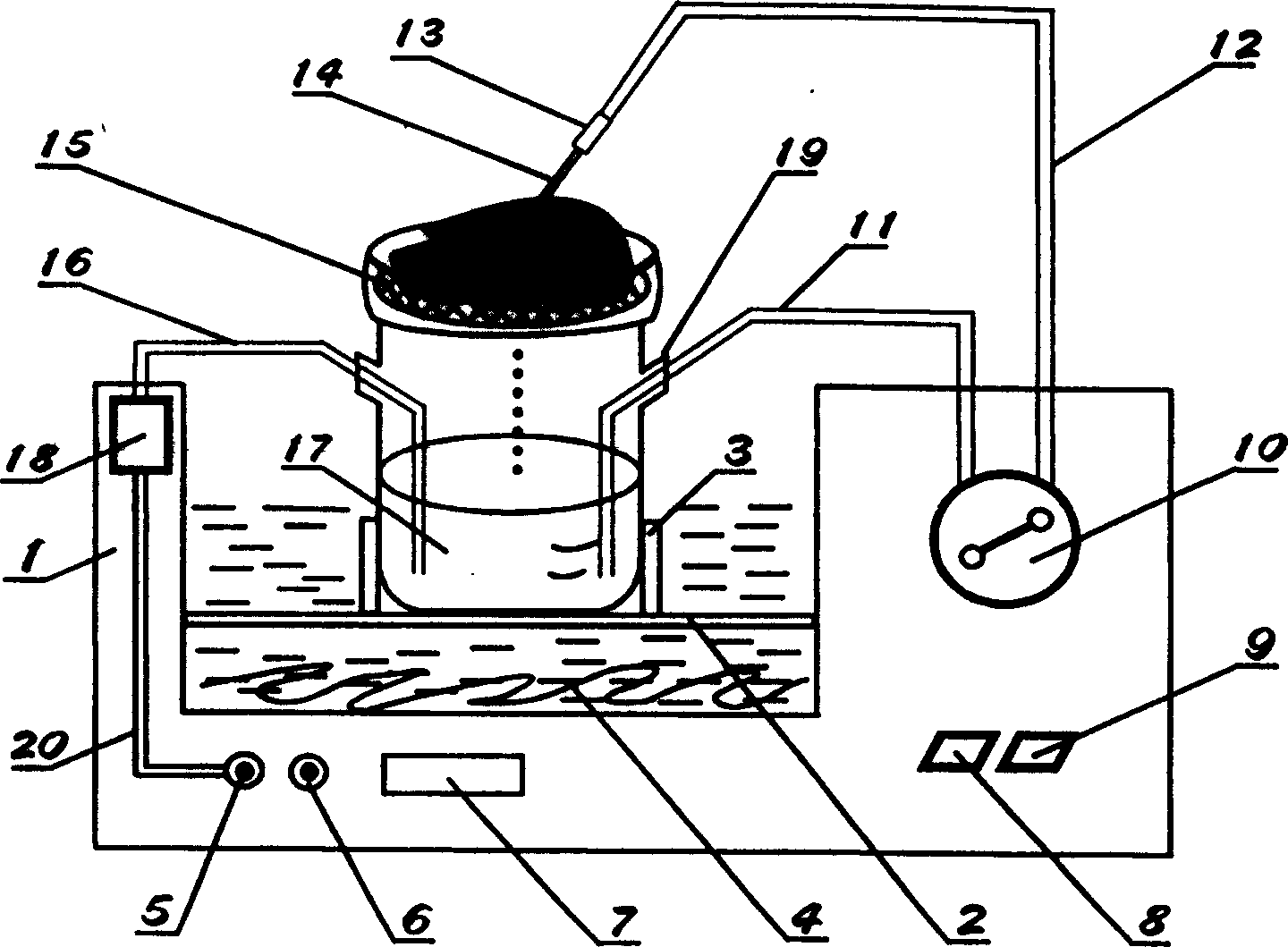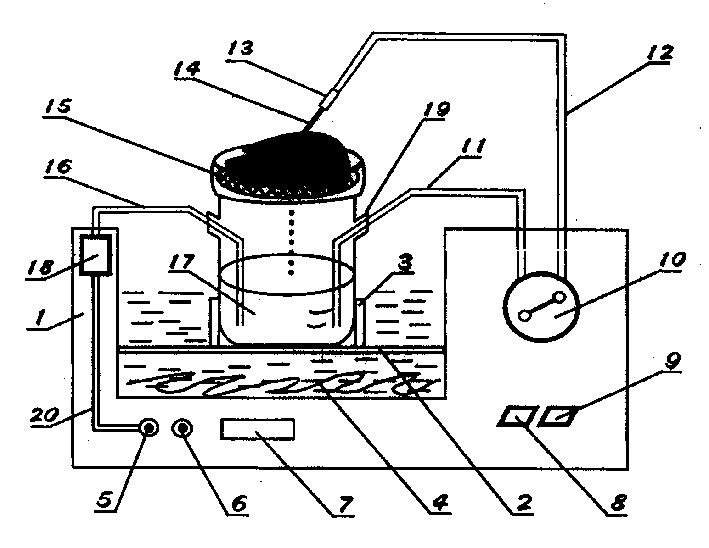Simple extraneous liver perfusion device for digesting and separating liver cells
A liver cell and perfusion technology, applied in the direction of suction equipment, etc., can solve the problems of insufficient perfusion, poor temperature control, cell damage, etc., and achieve the effect of ensuring the temperature of the perfusate, simplifying the operation process, and avoiding unstable pressure
- Summary
- Abstract
- Description
- Claims
- Application Information
AI Technical Summary
Problems solved by technology
Method used
Image
Examples
Embodiment Construction
[0021] Below in conjunction with accompanying drawing and embodiment the present invention will be further described:
[0022] Such as figure 1 As shown, a simple extracorporeal liver perfusion device for digesting and separating liver cells is characterized in that: a container is arranged on the body 1, a stainless steel mesh partition 2 is arranged inside the container, and the container located under the stainless steel mesh partition 2 A heater 4 is provided at the bottom, and a perfusion bottle 17 with a side hole 19 is positioned on the upper surface of the stainless steel mesh partition 2 through a fixing clip 3. The top of the perfusion bottle 17 is fixed with a stainless steel filter screen 15 through a bracket, and is set on the body 1 The input end of the peristaltic pump 10 communicates with the sterile input conduit 11, and the output end of the peristaltic pump 10 communicates with the sterile output conduit 12, the needle handle 13, and the perfusion needle 14....
PUM
 Login to View More
Login to View More Abstract
Description
Claims
Application Information
 Login to View More
Login to View More - R&D
- Intellectual Property
- Life Sciences
- Materials
- Tech Scout
- Unparalleled Data Quality
- Higher Quality Content
- 60% Fewer Hallucinations
Browse by: Latest US Patents, China's latest patents, Technical Efficacy Thesaurus, Application Domain, Technology Topic, Popular Technical Reports.
© 2025 PatSnap. All rights reserved.Legal|Privacy policy|Modern Slavery Act Transparency Statement|Sitemap|About US| Contact US: help@patsnap.com


